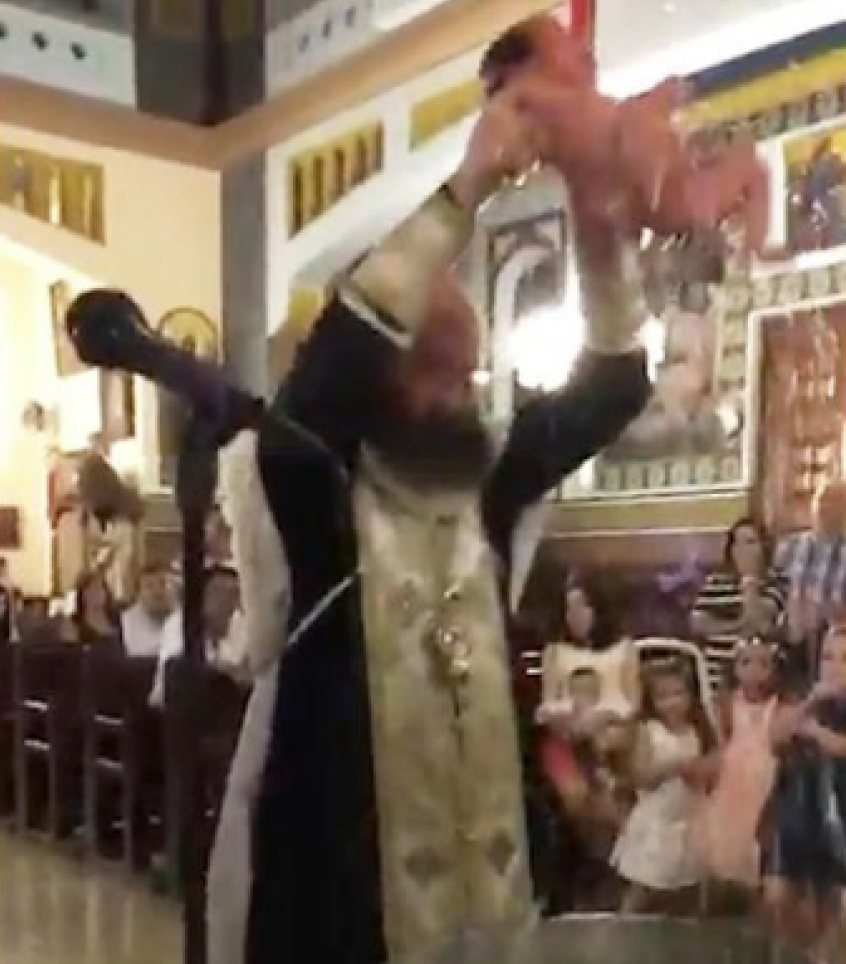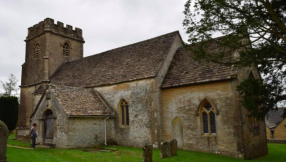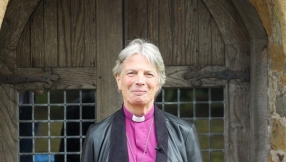Years ago the family cat used to be treated regularly for fleas. It was a swift and brutal process. Out the spray would come, the animal would be grabbed by the root of the tail and two seconds later it would all be over. It looked rather violent, but nothing was hurt except its dignity, it was good for all concerned and a minute later all was forgiven.

The Orthodox baptism video doing the rounds at the moment is a bit like that. A priest grabs a child and plunges it forcefully three times under water before handing it back to its stunned parents. It's caused no small amount of online outrage, with one Twitter user likening the priest's technique to 'child abuse'. Another said, 'Baptism?? More like attempted murder.'
It's undeniably shocking, particularly to non-Orthodox eyes. But it ought to be noted that the immersion of infants is standard practice in that tradition, and is often carried out with more enthusiasm than the pallidly dignified Anglican version. A creative 'top-and-tail' baptism from a few years ago in which the priest spins the infant round between the dips has been much admired.
As a Baptist, I'm all in favour of immersion; though along with that, in my tradition, goes the assumption that the candidate ought to be old enough to answer for herself (and, by implication, resist undue indignities). And while, to be honest, I would take exception if any child of mine were to be handled so roughly, I can see a certain sense in it.
One of the ways in which immersion scores over less biblical ways of baptising (come on, indulge me) is the sheer theatre of the thing. You are not just symbolically washed; you are symbolically buried, plunged into the grave and pulled out again alive. You are reborn: the water of the baptistry becomes the amniotic fluid of the womb.
And birth is a struggle, doing violence to the body of mother and child. It involves great pain. Perhaps resurrection is the same. When Lazarus is raised in John 11 there is the curious detail that he comes out of the tomb with his hands and feet still wrapped with the grave clothes, and a cloth around his face; he is literally bound and gagged (verse 44). In other words, he hops and crawls blindly towards life, bruised and torn by the stones on the way.
So perhaps our Orthodox priest is on to something. Birth is hard, and rebirth is hard. And life is hard, for most people, and the risen life is hard, too, if you're doing it right. Perhaps baptism should reflect that, with a spice of danger, an acknowledgment of the darkness it's rejecting, a touch of drama.
And also – for the avoidance of doubt – a proper risk assessment, appropriate training and plenty of insurance.
Follow Mark Woods on Twitter: @RevMarkWoods













